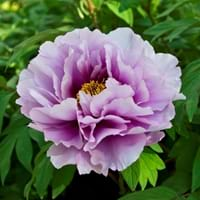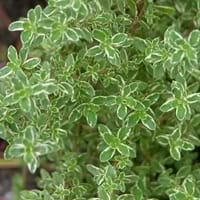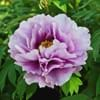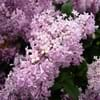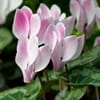Life Span
Perennial
Perennial
Type
Flowering Plants, Shrubs
Herbs
Origin
Asia, North America, Southern Europe
Asia, Europe
Types
Aristocrat, Buckeye Belle, Henry Bockstoce , Abalone Pearl, Coral Supreme, Cytherea, Charlie's White
Elfin Thyme, Pink Chintz Thyme, Lime Thyme, White Moss Thyme, Lavender Thyme, Silver Needle Thyme
Habitat
Hillside, Woods
Rocky areas
USDA Hardiness Zone
3-9
6-9
Sunset Zone
A3, 1a, 1b, 2a, 2b, 3a, 3b, 4, 5, 6, 7, 8, 9, 10, 11, 12, 13, 14, 15, 16, 17, 18, 19, 20, 22
1a, 1b, 2a, 2b, 3a, 3b, 4, 5, 6, 7, 8, 9, 10, 11, 12, 13, 14, 15, 16, 17, 18, 19, 20, 21, 22, 23, 24
Habit
Clump-Forming
Cushion/Mound-forming
Minimum Width
Not Available
Flower Color
Pink, Red, White
Crimson, Lavender, Pink, White
Flower Color Modifier
Not Available
Unknown
Fruit Color
Not Available
Not Available
Leaf Color in Spring
Dark Green
Green
Leaf Color in Summer
Dark Green, Green
Gray Green
Leaf Color in Fall
Bronze, Dark Green, Green
Gray Green
Leaf Color in Winter
Not Available
Gray Green
Plant Season
Spring
Summer
Sunlight
Full Sun, Part sun
Full Sun, Part sun
Type of Soil
Loamy
Loamy, Sandy
The pH of Soil
Neutral
Neutral, Slightly Alkaline
Soil Drainage
Well drained
Well drained
Bloom Time
Spring, Summer
Fall, Spring, Summer, Winter
Tolerances
Not Available
Drought
Where to Plant?
Ground, Pot
Container, Ground
How to Plant?
Grafting, Seedlings, Stem Planting, Transplanting
Seedlings, Stem Planting
Plant Maintenance
Medium
Medium
Watering Requirements
Does not require lot of watering, It cannot sustain wet-feet, Keep the ground moist but not water-logged, Needs watering once a week, Prefer drip-irrigation instead of Over-head watering, Water occasionally
Do not water frequently, Does not require lot of watering, Requires watering in the growing season, Water occasionally
In Summer
Lots of watering
Lots of watering
In Spring
Moderate
Moderate
In Winter
Average Water
Average Water
Soil pH
Neutral
Neutral, Slightly Alkaline
Soil Type
Loamy
Loamy, Sandy
Soil Drainage Capacity
Well drained
Well drained
Sun Exposure
Full Sun, Part sun
Full Sun, Part sun
Pruning
Do not prune during shooting season, Prune to control growth, Remove dead or diseased plant parts, Remove deadheads
Prune for shortening long shoots, Prune if you want to improve plant shape, Prune lower leaves, Requires extensive pruning
Fertilizers
All-Purpose Liquid Fertilizer
All-Purpose Liquid Fertilizer
Pests and Diseases
Botrytis Blight, Leaf spot, Stem spot, Viruses
Alternaria leaf blight, Aphids, Botrytis collar rot, Rhizoctonia Root Rot, Spider mites
Plant Tolerance
Not Available
Drought
Flower Petal Number
Semi-Double
Not Available
Fragrant Bark/Stem
No
Yes
Foliage Texture
Coarse
Fine
Foliage Sheen
Glossy
Matte
Attracts
Ants
Butterflies
Allergy
Not Available
Diarrhea, Skin irritation
Aesthetic Uses
Beautification, Bouquets, Showy Purposes, Used for decorating walls, fences, gates, hedges, etc.
Beautification, Showy Purposes, Used for decorating walls, fences, gates, hedges, etc.
Beauty Benefits
Not Available
Not Available
Environmental Uses
Air purification
Air purification
Medicinal Uses
Cough, Gout, Headache, Heartburn, Kidney problems, Upset stomach, Urinary tract problems
Arthritis, Bronchitis, Chronic fatigue, Cough, Gastritis, Hair Loss, Insomnia, Kidney problems, Muscle Pain, Skin irritation, Snoring, Sore throat, Stomach pain, Swelling
Part of Plant Used
Flowers, Root, Seeds
Whole plant
Other Uses
Showy Purposes, Used as Ornamental plant, Used for fragrance
Air freshner, Cosmetics, Economic Purpose, Employed in herbal medicine, Oil is used in perfume, soaps, creams, etc., Showy Purposes, Used As Food, Used as Ornamental plant, Used for fragrance
Used As Indoor Plant
No
Yes
Used As Outdoor Plant
Yes
Yes
Garden Design
Feature Plant, Foundation, Mixed Border
Container, Edible, Herb, Rock Garden
Botanical Name
Paeonia suffruticosa
Thymus vulgaris
In Hindi
Peony
अजवायन के फूल
In German
Pfingstrose
Thymian
In Spanish
Peonía
Tomillo
In Portuguese
Peônia
Tomilho
In Polish
Piwonia
Tymianek
In Latin
AGLAOPHOTIS
Thymum
Phylum
Magnoliophyta
Magnoliophyta
Class
Magnoliopsida
Magnoliopsida
Order
Not Available
Not Available
Family
Paeoniaceae
Labiatae
Clade
Angiosperms, Core eudicots, Eudicots
Not Available
Tribe
Not Available
Not Available
Subfamily
Not Available
Not Available
Season and Care of Peony and Thyme
Season and care of Peony and Thyme is important to know. While considering everything about Peony and Thyme Care, growing season is an essential factor. Peony season is Spring and Thyme season is Spring. The type of soil for Peony is Loamy and for Thyme is Loamy, Sandy while the PH of soil for Peony is Neutral and for Thyme is Neutral, Slightly Alkaline.
Peony and Thyme Physical Information
Peony and Thyme physical information is very important for comparison. Peony height is 76.20 cm and width 61.00 cm whereas Thyme height is 10.20 cm and width Not Available. The color specification of Peony and Thyme are as follows:
Peony flower color: Pink, Red and White
Peony leaf color: Dark Green
Thyme flower color: Crimson, Lavender, Pink and White
- Thyme leaf color: Green
Care of Peony and Thyme
Care of Peony and Thyme include pruning, fertilizers, watering etc. Peony pruning is done Do not prune during shooting season, Prune to control growth, Remove dead or diseased plant parts and Remove deadheads and Thyme pruning is done Prune for shortening long shoots, Prune if you want to improve plant shape, Prune lower leaves and Requires extensive pruning. In summer Peony needs Lots of watering and in winter, it needs Average Water. Whereas, in summer Thyme needs Lots of watering and in winter, it needs Average Water.
